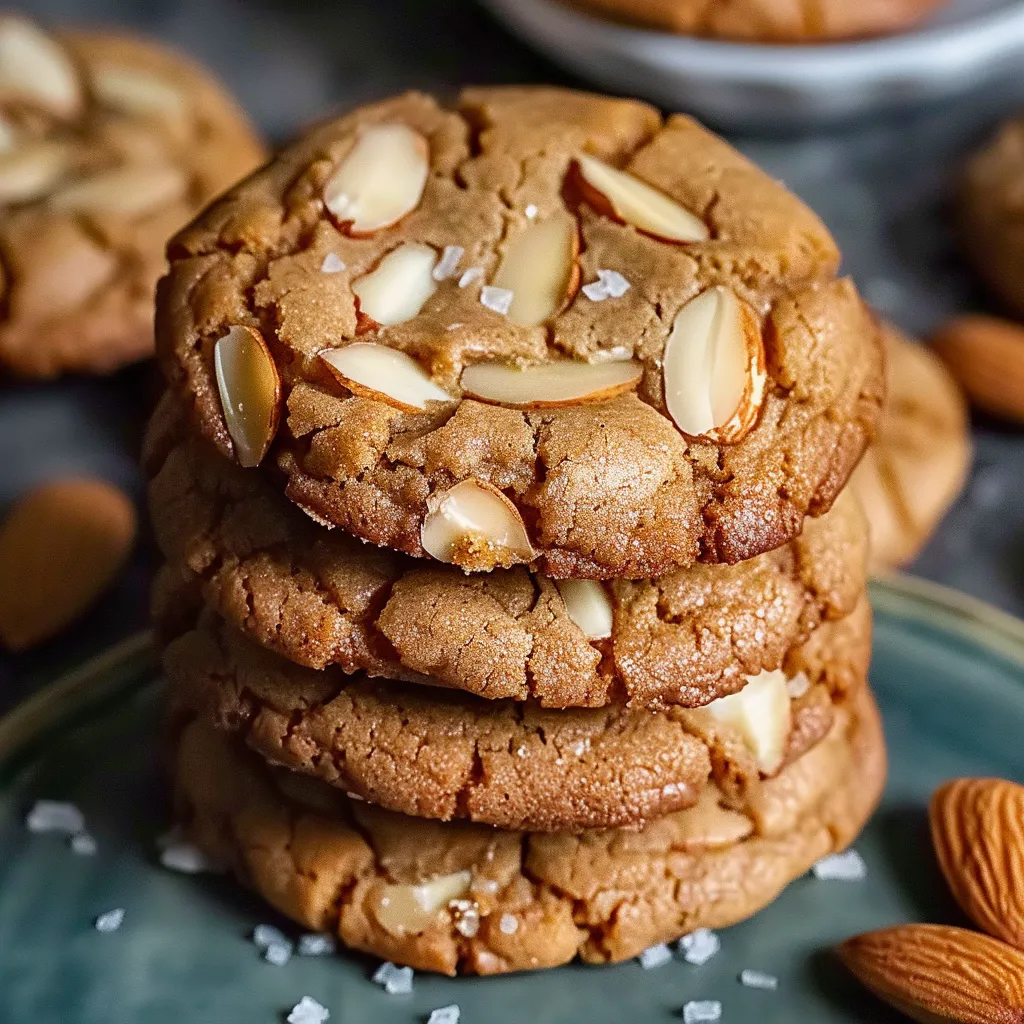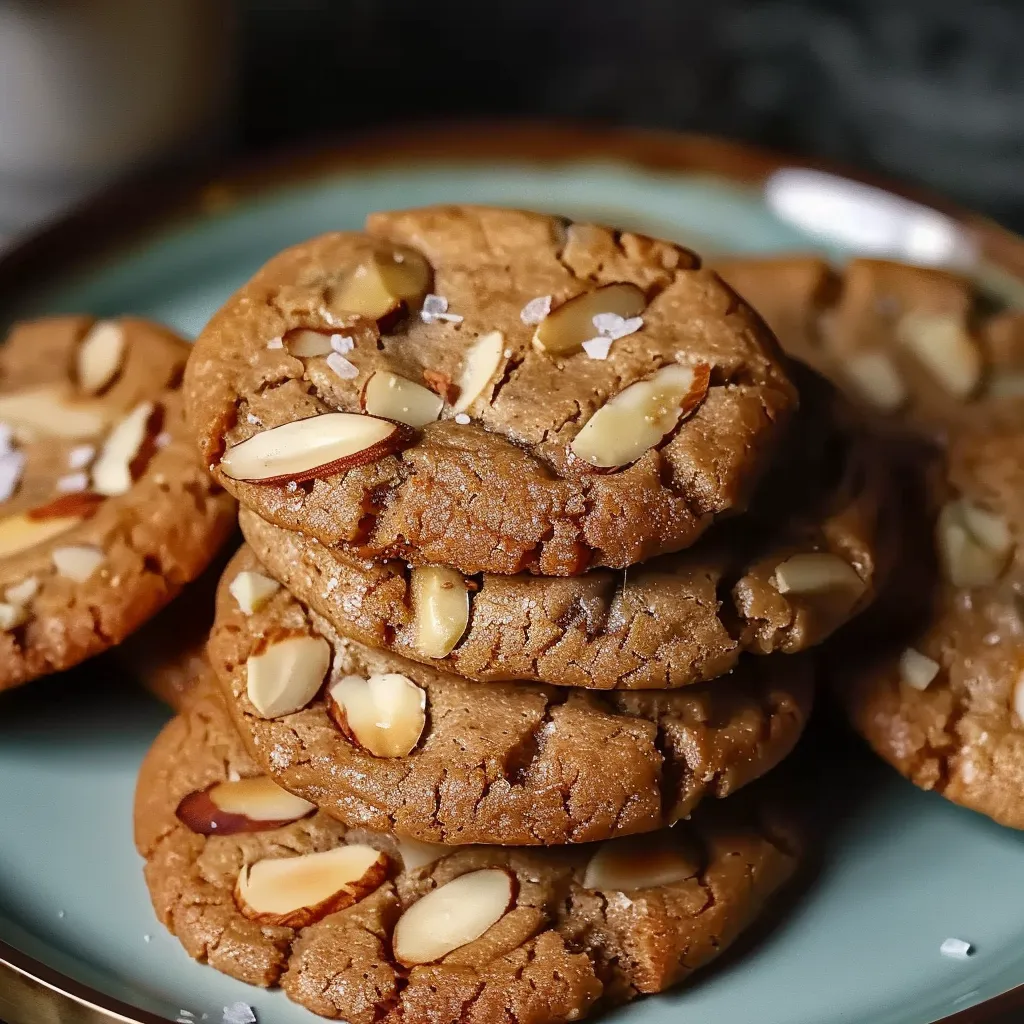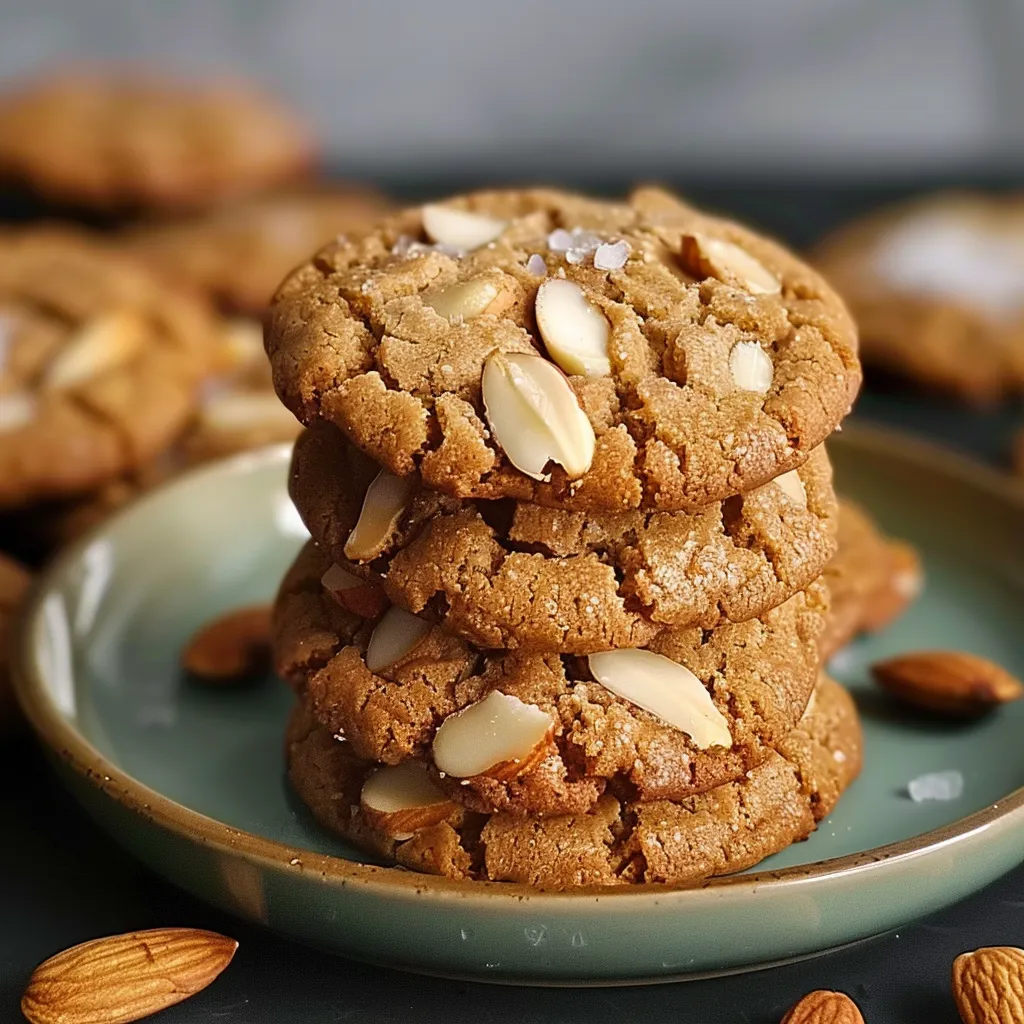 Pin to Favorites
Pin to Favorites
The moment your teeth sink into one of these Soft & Buttery Almond Butter Cookies, you'll understand why they've become a staple in my baking repertoire. The edges offer just enough crispness to provide structure, while the centers remain gloriously tender and rich with nutty almond flavor. These cookies strike that perfect balance between familiar comfort and subtle sophistication – the kind of treat that disappears quickly from cookie jars and generates requests for the recipe at every gathering.
Last Christmas, I baked these for our family cookie exchange, and my brother-in-law – who typically passes on desserts – ate four in one sitting and asked if he could take the remaining dozen home. The rich, nutty flavor combined with their perfect texture makes them irresistible even to those who aren't usually sweet-toothed.
Essential Ingredients and Selection Tips
- Almond Butter: The star ingredient deserves careful selection. I recommend using a creamy, natural almond butter with minimal additives. Look for one where 'almonds' are the main ingredient, with perhaps a touch of salt. Avoid varieties with added sugars or oils, which can affect the cookie's texture and sweetness.
- Butter: Use unsalted butter to control the salt content precisely. The quality of your butter matters – a European-style butter with higher fat content creates an even richer cookie.
- Sugars: The combination of granulated and brown sugar is non-negotiable for the perfect texture. Granulated sugar creates spread and crispness, while brown sugar adds moisture and chewiness.
- Flour: All-purpose flour provides the right structure without toughness. Measure by spooning the flour into your measuring cup and leveling with a knife rather than scooping directly from the bag.
 Pin to Favorites
Pin to Favorites
Detailed Cooking Instructions
- Step 1:
- Preheat your oven to 350°F (175°C) and line baking sheets with parchment paper or silicone baking mats.
- Step 2:
- In a large bowl, cream together softened butter and almond butter until smooth, about 1 minute.
- Step 3:
- Add granulated sugar and brown sugar, beating for 2-3 minutes until light and fluffy.
- Step 4:
- Mix in eggs one at a time, followed by vanilla extract, beating until fully incorporated.
- Step 5:
- In a separate bowl, whisk together flour, baking soda, and salt.
- Step 6:
- Gradually add the dry ingredients to the wet mixture, mixing until just combined.
- Step 7:
- Using a cookie scoop, portion dough into rounded tablespoons and place on baking sheets, leaving space for spreading.
- Step 8:
- Bake for 10-12 minutes, until edges are set and centers look slightly underbaked.
- Step 9:
- Cool on the baking sheet for 5 minutes before transferring to a wire rack.
When I first developed this recipe, I was aiming to recreate the texture of my grandmother's butter cookies but with the nutty complexity of almond butter. The breakthrough came when I realized that keeping the ratio of fats (butter and almond butter) high relative to the flour created that melt-in-your-mouth quality that makes these cookies special.
These Soft & Buttery Almond Butter Cookies embody what I love most about baking – the ability to transform simple ingredients into something that brings joy with every bite. The rich, nutty complexity of almond butter elevates these beyond ordinary cookies, making them sophisticated enough for special occasions yet comforting enough for everyday treats.
 Pin to Favorites
Pin to Favorites
Frequently Asked Questions
- → Can I use crunchy almond butter instead of creamy?
- Yes, you can substitute crunchy almond butter for creamy if you prefer more texture in your cookies. The cookies will have small bits of almonds throughout, adding a pleasant crunch, but will still maintain their overall soft texture.
- → How do I know when these almond butter cookies are done baking?
- These cookies are done when the edges are just lightly golden brown while the centers still look slightly soft and underdone (about 10-12 minutes). They'll continue to set as they cool on the baking sheet. For soft cookies, avoid overbaking – they should not be brown all over.
- → Can I freeze the cookie dough or baked cookies?
- Yes to both! The dough can be rolled into balls, placed on a baking sheet, frozen until solid, then transferred to a freezer bag for up to 3 months. Bake from frozen, adding 1-2 minutes to the baking time. Baked cookies also freeze well in an airtight container for up to 2 months.
- → Why did my cookies spread too much during baking?
- Too much spreading usually happens if the butter was too soft or melted, or if the dough was too warm. Chilling the dough for 30-60 minutes before baking can help prevent excessive spreading. Also, make sure your oven is properly preheated.
- → Can I reduce the sugar in this recipe?
- You can reduce the sugar by up to 25% while still maintaining good texture and structure. Keep in mind that sugar affects not only sweetness but also moisture and spread, so reducing it too much may result in drier, less chewy cookies.
